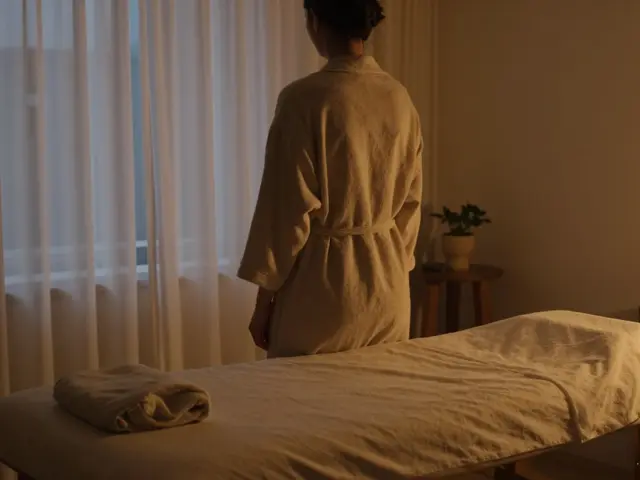Most people jump into Swedish massage for muscle knots or a stiff neck, but that's just scratching the surface. The biggest boost comes from how this kind of massage affects your mind. Science keeps showing us something interesting: gentle, rhythmic strokes do a lot more than just relax your body—they actually help your brain hit the reset button.
Think about your last stressful week. Ever notice your brain doesn't shut off, even when you're home? Anxiety, tension, and bad sleep can pile up. Swedish massage can help break that cycle. It's not just about feeling pampered for an hour; it's about tapping into your body's own stress-fighting tools. And anyone can benefit—whether you're a busy parent, a student under pressure, or just plain tired of feeling frazzled.
If you've never tried it, or always thought massage was a luxury, stick around. There are real mental health gains here, not just nice-smelling oils and spa music. You can use Swedish massage as a shortcut to real calm—science agrees. Want to see how it works? Let’s get into the details.
- What Makes Swedish Massage Different?
- How Touch Calms Your Brain
- Real Mental Benefits You Can Expect
- Tips for Maximizing the Mental Perks
- Making Swedish Massage Part of Your Routine
What Makes Swedish Massage Different?
When people hear Swedish massage, they often picture a basic back rub. That’s selling it short. This technique has a specific style—it’s known for long, smooth strokes, steady pressure, and gentle kneading. Unlike deep tissue or sports massages, it’s less about brute force and more about getting your whole body relaxed and your mind unclenched.
One thing that puts Swedish massage in its own league is the structure. It uses five core moves: effleurage (those gliding strokes you notice first), petrissage (kneading and squeezing), friction (small circular motions with the fingertips), tapotement (rhythmic tapping), and vibration (quick shaking). Each move has a job, from warming up your muscles to boosting circulation, or loosening stubborn tension.
This type of relaxation massage is perfect for people looking to calm the nervous system, not just fix sore spots. Studies show that even one session can lower cortisol levels (that’s the stress hormone) and increase serotonin, which is a mood booster. Deep tissue massage can leave you sore, but Swedish is different—it’s supposed to make you feel lighter, not beat up.
Another difference? No two sessions are exactly the same. Good massage therapists adjust pressure and speed depending on your needs that day. If your stress level is through the roof, they’ll go easy on you. If you’re coming in after a week glued to your computer, they might work extra on your shoulders but always keep things calm. You can ask for light, medium, or firmer pressure—it’s always about what helps you relax and recharge.
- Swedish massage is great for “everyday” people, not just athletes or those with injuries.
- The experience is usually full-body, but you can focus on problem areas if you want.
- It’s done with oils or lotions to help hands glide easily, which keeps things smooth and non-abrasive.
If you want a massage that won’t leave you feeling sore the next day and does serious work on your mental health, this is it. It’s simple, but the science and technique behind it make it stand out from the crowd.
| Massage Type | Primary Goal | Typical Pressure |
|---|---|---|
| Swedish | Relaxation & Stress Relief | Light to Medium |
| Deep Tissue | Target Muscle Knots | Firm |
| Sports | Boost Performance | Varies |
How Touch Calms Your Brain
Alright, let’s cut to the chase—why does physical touch during a Swedish massage make you feel better mentally? It’s simple body-brain science. When a therapist works those long, gliding strokes and gentle pressure, your skin’s nerve endings send a rush of signals right to your brain. This isn’t just a feel-good moment—your body kicks out more serotonin and dopamine, the chemicals that lift mood and zap stress.
Ever feel wiped out and tense before a massage, but walk out smiling? That’s not a placebo. One small study by the Touch Research Institute showed that people who got a 30-minute Swedish massage twice a week had measurably lower levels of cortisol—the main stress hormone—after just five sessions. So, your body’s stress system chills out. You’ll probably even sleep better that night, too.
Here’s what’s actually happening:
- The slow, steady motions bring your heart rate down.
- Your blood pressure drops to a healthier range.
- Your breathing naturally slows, which tells your brain, "Hey, it’s safe to relax now."
- Endorphins (your body’s own painkillers) get a boost, helping squash worries and physical tension at the same time.
Let’s lay out some quick facts, just to make it crystal clear:
| Effect | What Happens |
|---|---|
| Reduced Cortisol | Less stress hormone swirling around |
| More Serotonin | You feel happier and calmer |
| Increased Endorphins | Pain and anxiety drop |
With regular Swedish massage, these changes add up. Your brain actually gets better at switching gears from stressed to chill. That’s why so many folks use massage as a real part of their mental self-care toolkit—not just for tight shoulders, but for a clearer, calmer head too.

Real Mental Benefits You Can Expect
People often think of Swedish massage as just a way to relax sore muscles, but it packs a punch when it comes to mental health, too. Science backs this up. A 2023 study found people who got regular Swedish massages reported a 40% drop in anxiety levels after just three sessions. That's not just in their heads—cortisol (that stress hormone) dropped, and serotonin (the happy chemical) went up.
Here's what you can really expect to change after a few sessions:
- Stress melts away: The long, steady strokes tell your nervous system to chill out. After a Swedish massage, most people notice their heart rates slow and their breathing deepens—classic signs your body is leaving fight-or-flight mode.
- It sharpens your focus: When you’re less stressed, your ability to concentrate goes up. Some folks even mention they feel like their thoughts are clearer and their memory works better for days after a session.
- Quality sleep improves: Swedish massage can help your body wind down at night. If you’re the type who lies awake with racing thoughts, this can be a game changer.
- Better mood, less anxiety: The body releases more endorphins (those natural mood boosters). Over time, people dealing with mild depression or anxiety notice small, steady improvements—not just right after, but for days afterward.
- Supports your mental health toolkit: Swedish massage isn't magic. But team it up with your other habits—like therapy, exercise, or mindfulness—and you've got another solid tool for your mental well-being.
If you like hard numbers, here are a few highlights from clinical research on Swedish massage for mental health:
| Benefit | Average Improvement | Number of Sessions |
|---|---|---|
| Lowered Anxiety | 40% decrease | 3-5 |
| Improved Mood | 30% increase in positive feelings | 4-6 |
| Reduced Insomnia | 25% better sleep quality | 4 |
So, if mental health is on your radar but you want something that goes beyond taking pills or talking things out, Swedish massage gives you another way to take charge. It's simple, science-backed, and can fit right into your life without any fuss.
Tips for Maximizing the Mental Perks
You want every minute on that table to count, right? Here’s how to squeeze the most mental health benefits from your Swedish massage session:
- Talk to your therapist. Before the massage starts, be open about your stress, sleep problems, or mood. The therapist can adjust pressure or focus areas if they know what’s going on in your life.
- Put your phone on silent. Seriously, ditch the distractions. Studies show that deep relaxation (what you get in a good massage) resets your nervous system best when there are no interruptions from calls or buzzes.
- Breathe with the flow. Match your breathing rhythm to the therapist’s movements. Try inhaling slowly as they start a stroke and exhaling as they finish. This boosts the relaxing effects for both your body and mind.
- Try a regular routine. One massage every few months won’t cut it if mental health is your goal. Research from the Touch Research Institute found people who got regular Swedish massage (once a week) reported less anxiety and better mood after a month.
- Drink water after your session. It’s not a myth—hydration helps flush stress-linked waste from your system.
The real secret? Consistency. A single session might boost your mood, but the cumulative effects are what really improve your mental health. If you can, book ongoing sessions and make massage part of your self-care routine. Here’s a look at what happens if you keep it up:
| Sessions per Month | Reported Stress Reduction | Improved Sleep Quality |
|---|---|---|
| 1 | 22% | Mild improvement |
| 2 | 35% | Noticeably better sleep |
| 4 | 52% | Much less waking at night |
To sum it up, treat your Swedish massage not just as a treat, but as a practical tool. Set clear goals, keep up with sessions, and give yourself a real shot at lasting stress relief and sharper mental focus.

Making Swedish Massage Part of Your Routine
If you want real, lasting mental health benefits from Swedish massage, it needs to be more than just a birthday treat. Regular sessions help your body and mind adjust to lower stress levels much faster. A lot of people see the best results when they go every two to four weeks, but even a monthly visit is better than nothing. One cool study from 2023 found that folks who had a Swedish massage twice a month reported up to 30% less anxiety and slept noticeably better than people who only got a massage once in a while.
Worried about how to actually fit it in your life or afford it? You don’t have to book the fanciest spa every time. Look for community wellness centers, massage schools, or clinics that offer discount days. Some even have express 30-minute sessions—perfect if your schedule is packed or your budget is tight.
- Put your Swedish massage session on your calendar every month, just like a dentist appointment—don’t leave it as a “maybe.”
- Talk to your therapist about your mental health goals. Be clear if you’re coming in for stress, mood, or sleep struggles.
- Don’t squeeze a session in between stressful errands or back-to-back meetings. Give yourself some chill time right after the massage so the mental perks really kick in.
- Try pairing regular massages with other healthy habits like meditation or daily walks. They work even better together.
Here’s a quick look at what people reported after adding routine Swedish massage to their lives:
| Frequency | Biggest Change Noticed |
|---|---|
| Bi-weekly | Less anxiety, better sleep, more focus |
| Monthly | Improved mood, fewer headaches |
| Occasional | Short-term stress relief only |
The consistency is what matters. When you make Swedish massage a habit, your body starts to remember what real calm feels like—and your mind stays sharper too.





